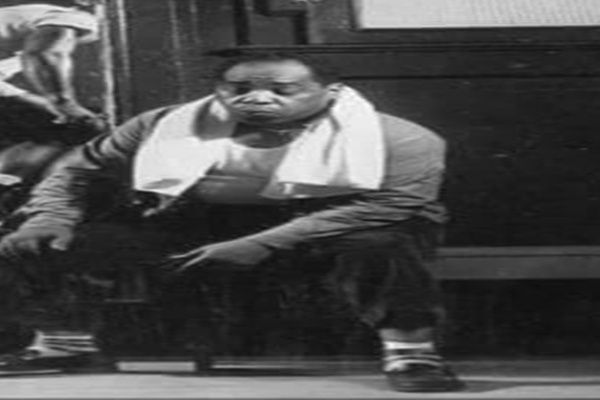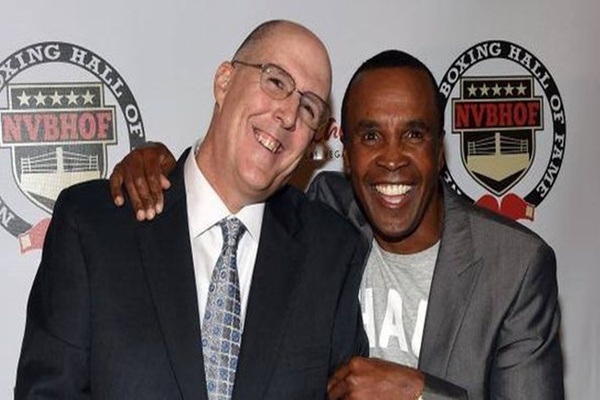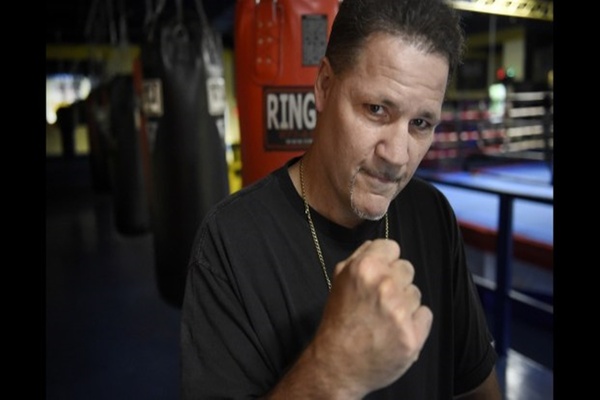Right a horrible wrong: Why Harry Wiley must be elected into the International Boxing Hall of Fame
"I want you to call Ed Brophy and you tell him I want Harry Wiley in that damn Hall of Fame. You tell him Muhammad Ali said so."


Joe Louis, Muhammad Ali, and Roberto Duran. Three of the greatest fighters who ever laced em’ up.
All are in the International Boxing Hall of Fame.
Their trainers Jack Blackburn, Angelo Dundee and Ray Arcel were enshrined in the Hall several years ago.
Perhaps the best fighter ever, Sugar Ray Robinson, was part of the first class of inductees in 1990.
It would be safe to assume that Robinson’s trainer, Harry Wiley, would also be honored with his legendary pupil.
No.
Why?
“I was told that my father’s name didn’t have enough sizzle,” Wiley’s son, Harry Jr., told me on the phone a few weeks ago.
Enough sizzle?
One would think that the endorsement of Ali would have been enough.
“One night I was talking to Ali,” Wiley Jr. says. “He asked me if my father was in the International Boxing Hall of Fame.” I said “no”, Ali said, “I want you to call Ed Brophy and you tell him I want Harry Wiley in that damn Hall of Fame. You tell him Muhammad Ali said so.”
“When did this happen?” I ask.
“In the 1980s,” he replies.
“Close to forty years ago.”
“Yes,” says Wiley Jr.
Harry Wiley Sr. was born in New York City in 1907. He took up boxing at 16. Did well in the amateur ranks until a taxi ran into him while crossing the street. His fistic career might have been over but not his involvement in the sweet science. According to boxing historian Buddy Gibbs, around the same time, Wiley gained experience and extra scratch while working in the camps of heavyweight contender Harry Wills and world champion Jack Dempsey.
“He learned how to tape hands,” said Wiley Jr. “It was a good living at the time. You got a nickel to tape hands. He got incredibly good at it. The word got around. He became friends with Sam Langford when Sam was older. He built a name in New York as one of the best hand tapers in the game.”
Wiley hooked up with Blackburn. Chappie was tough on Wiley, but his learning curve was quick. He also was employed as a trainer at the Salem Crescent Athletic Club in New York. He quickly built some of the best amateur fighters in the country. Though racism torpedoed his job as head trainer of the 1932 Olympic boxing team, Wiley was immensely proud of being the first African American to hold the position.
A few years later, he was training young people to compete in the New York Golden Gloves. He also found time to work for the Montclair Y.M.C.A in New Jersey. After Wiley took over, word spread that the squad had the best fighters in each weight division. In 1935, a young kid from Detroit started hanging out at the gym. His name was Walker Smith Jr. Within a few years, the world would know him as Sugar Ray Robinson.
“Robinson came to the gym from Broadway,” Wiley Jr. says. “He’s tapping for nickels and quarters. His mother does not want him in the gym, but he kept coming back.”
"He wants to spar but he’s as skinny as a beanpole.” Finally, my father relents. “You aren’t bad,” he told the novice.
“My father took him under his wing. He had an agreement with George Gainford, that he (Wiley) would be the trainer and Gainford the manager. My father liked Robinson immediately. He bought him his first pair of man pants. They got to work. Robinson got better and better.”
Robinson was adept at imitating other fighters’ movements in the gym.
“You can’t do that son,” said Wiley. “You have to have your own style.”
Wiley got in the ring and worked with Robinson on how to fight on the inside. One day he said, “You know kid, you don’t pay me money, you hit too hard.”
Robinson was his star pupil. They’d be together for almost 25 years.
Around the same time, Wiley was working with another legendary fighter.
“In 1937, Henry Armstrong came looking for Harry Wiley,” Wiley Jr. said. Armstrong invited Wiley to come to his camp. The trainer agreed. Wiley also worked with future champion and Armstrong opponent, Lou Ambers.
Robinson compiled a record of 85-0 in the amateurs. His ascent was astounding. He turned professional in 1940. Six years later he captured the welterweight championship of the world. He gave up the belt when he won the middleweight title in 1951. Robinson would go on to win the middleweight strap four more times.
Still fighting in his forties, Wiley begged Robinson to hang up his gloves. He was still training at Wiley’s gym. Robinson said he couldn’t quit; he needed the money.
Robinson wasn’t one to give credit to anyone for his boxing success other than himself. But the importance of Wiley is pretty obvious based on this statement from Robinson.
“When my father went fishing,” said Wiley Jr., “Robinson told the assistant trainer, ’When Wiley stands on the bank, if he falls in that water and gets in trouble, you go get him ‘cause I need him.”
Wiley met the young Cassius Clay in 1961. Clay, who three years later changed his name to Muhammad Ali, wanted Wiley to train him. Wiley would not, telling Clay that he “already had a good trainer.”
The two would eventually work together later in Ali’s career. He even showed “The Greatest” the shoulder roll. Ali never forgot the experience.
He told Harry Jr.
“Your father was the best trainer I’ve worked with or ever seen. He was the greatest.”
When Wiley passed away in 1972, Ali picked up the tab.
Harry Wiley was the trainer of arguably the greatest fighter in the history of the sport. He worked with world champions Lou Ambers and Henry Armstrong. Before his death, he prepared Muhammad Ali for his fights against Jimmy Ellis and Buster Mathis.
The champions he trained and worked with are all in the Hall of Fame.
Harry Wiley is not.
This egregious error must be rectified.
Right this wrong International Boxing Hall of Fame.
SecondsOut Weekly Newsletter
Permission Statement
If you accept, we will process your data to fulfil this purpose.
© 2000 - 2018 Knockout Entertainment Ltd & MaxBoxing.com



